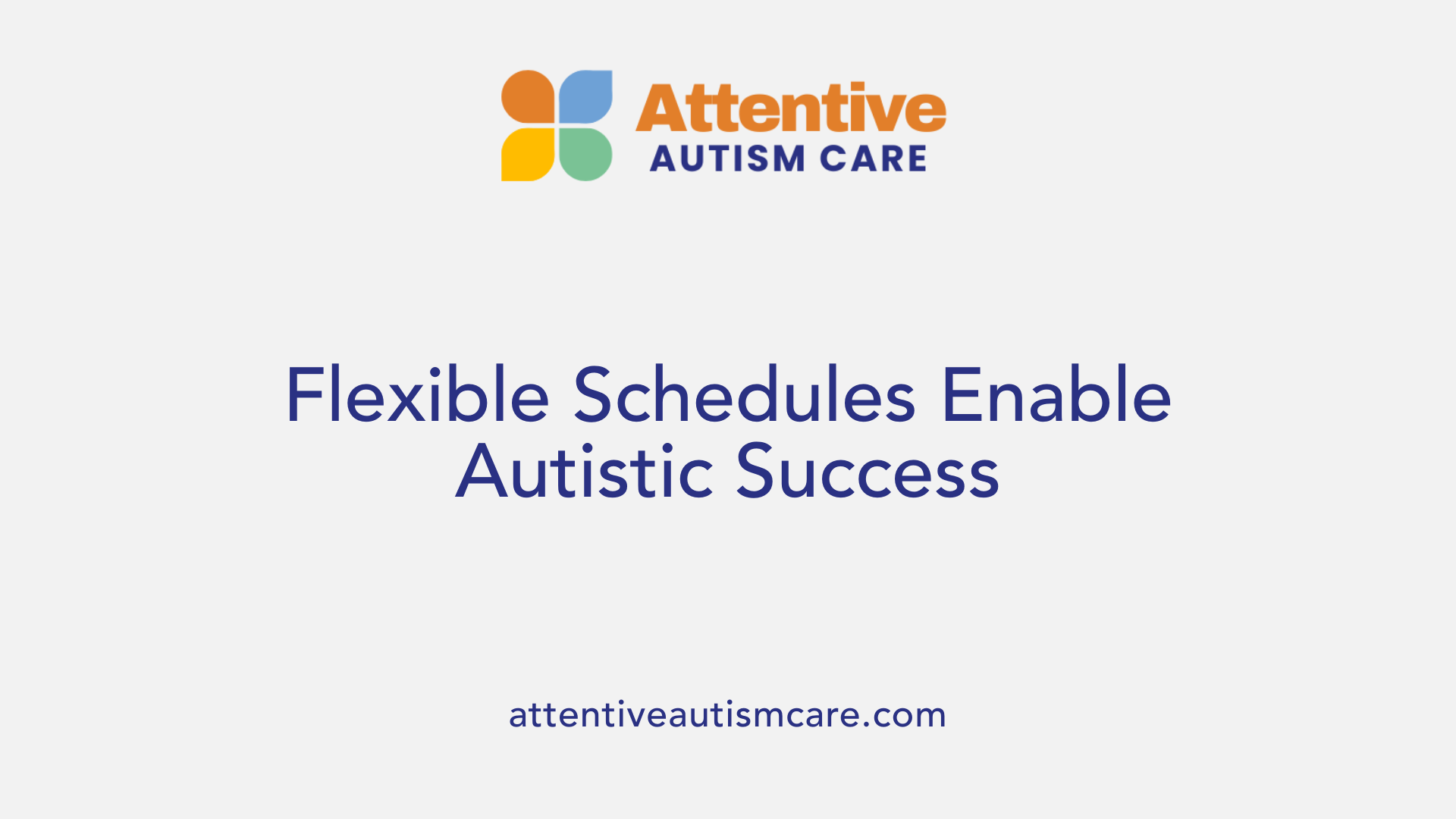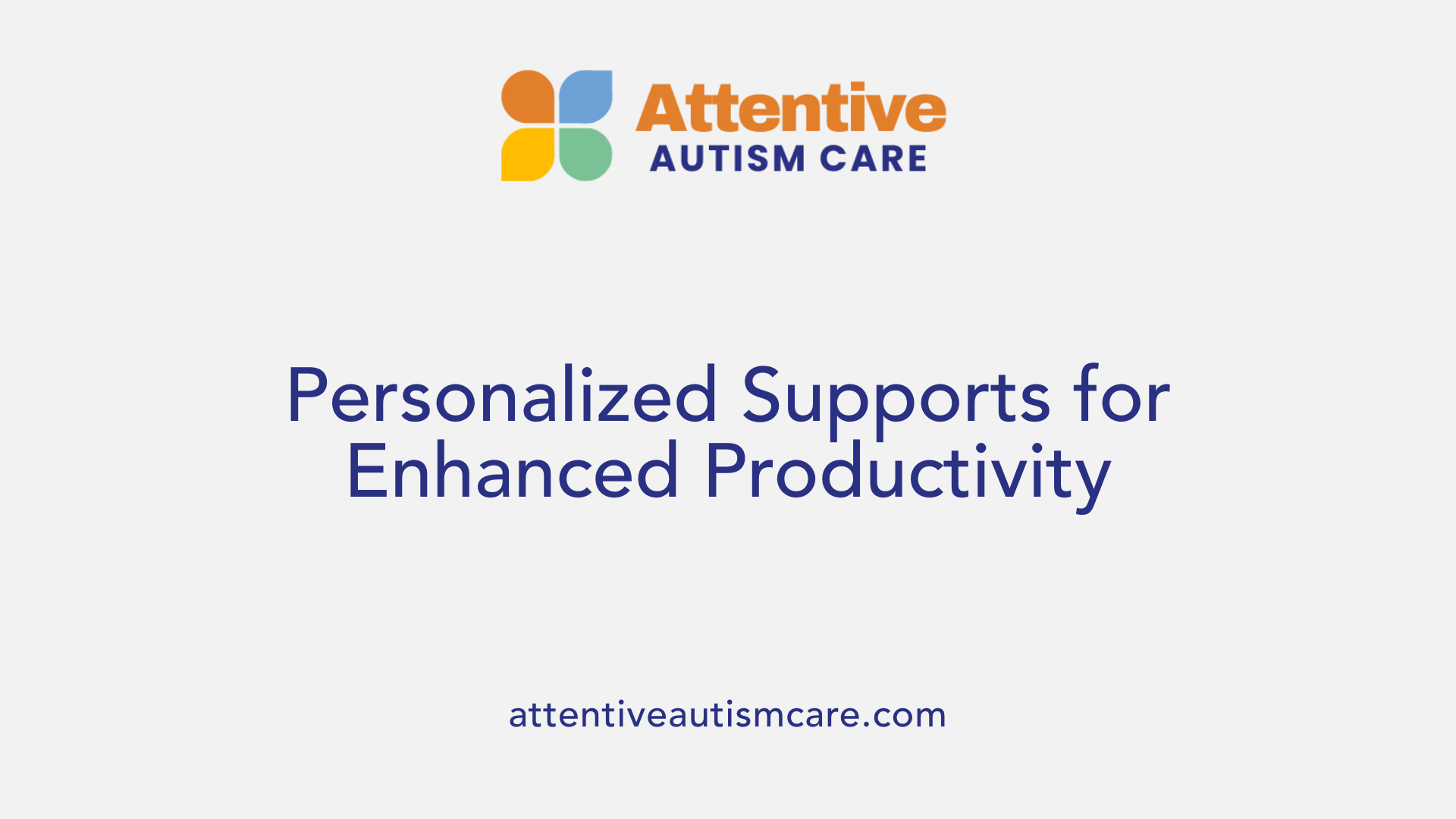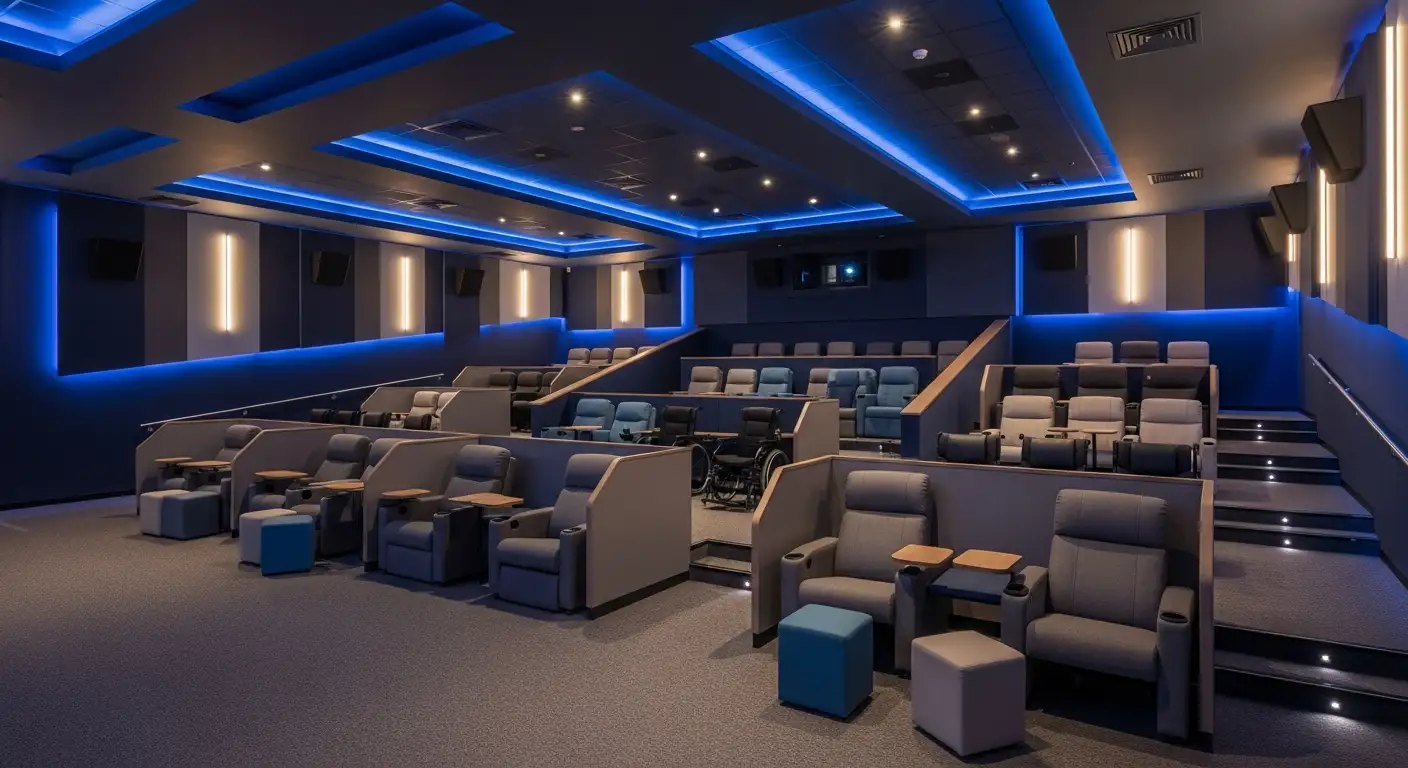Supporting Autistic Adults in Remote Work Environments
Enhancing Remote Workplace Inclusivity for Autistic Professionals

The Rise of Remote Work and Autism Inclusion
As remote work becomes a permanent fixture in the modern employment landscape, it offers unique opportunities and challenges for autistic adults. Creating supportive remote work environments is essential to not only increase employment rates for individuals on the autism spectrum but also to ensure their well-being and productivity. This article explores how behavioral therapies, workplace adjustments, and inclusive cultures converge to foster success for autistic professionals working remotely.
Understanding Applied Behavior Analysis (ABA) Therapy and Its Role
What is Applied Behavior Analysis (ABA) therapy?
Applied Behavior Analysis (ABA) therapy is a scientifically backed approach centred on understanding and modifying behavior to assist individuals with autism in acquiring new skills and reducing unhelpful behaviors. It employs strategies like positive reinforcement to encourage communication, social skills, and daily living competencies, while decreasing negative behaviors. ABA programs are customized and regularly adjusted by trained professionals such as Board-Certified Behavior Analysts (BCBAs). Common methods include Discrete Trial Training (DTT) and Naturalistic Interventions. This therapy aims to enhance various developmental areas including language and independence, showing strong evidence for effectiveness when tailored and delivered supportively.
How does ABA therapy benefit individuals with autism?
ABA therapy supports individuals with autism by fostering positive behaviors and decreasing harmful ones, enhancing adaptive functioning. It improves essential skills like communication, social interaction, attention, and daily living tasks, contributing to greater independence. The individualized nature of ABA, incorporating positive reinforcement and structured teaching, encourages skill development in natural contexts. Early and intensive intervention yields notable gains in language and social skills, aiding individuals to better handle real-world situations and improving their quality of life and long-term outcomes.
Who provides ABA therapy services?
ABA services are delivered by trained professionals including BCBAs, Registered Behavior Technicians (RBTs), and licensed therapists. These experts work through clinics, specialised companies, or community settings, offering comprehensive assessments, behavior modification, skill teaching, and social training. Providers emphasize family involvement and may offer remote or community-based therapy options. Their commitment is to scientifically grounded interventions that enhance communication, independence, and social functioning in autistic individuals.
What techniques are commonly used in ABA therapy?
Key ABA techniques include positive reinforcement to reward desired behaviors; prompting and fading to support new skills while encouraging autonomy; and behavior chaining to break complex tasks into manageable steps. Visual modeling, through aids or videos, assists especially visual learners in understanding behaviors. Natural environment teaching applies these principles in everyday settings to help generalize skills. Methods such as behavior contracts and extinction also manage behaviors effectively. All techniques are individualized to meet the specific needs and development levels of each person.
The Importance of Clear and Concise Communication in Remote Settings
Communication challenges for autistic adults
Autistic individuals often face unique challenges in remote work communication, particularly due to difficulties in processing indirect signals like tone or body language. This can lead to misunderstandings or increased anxiety about tasks and social interactions.
Strategies for clear communication
Effective remote work for autistic employees relies on clear, direct, and concise communication. Avoiding vague language and providing explicit instructions helps ensure messages are understood correctly. Virtual meetings and emails should prioritize clarity to minimize confusion.
Use of written and visual tools
Incorporating written and visual aids enhances understanding. Tools such as digital calendars, visual schedules, and detailed written instructions offer tangible references that help autistic employees organize their day and anticipate upcoming tasks.
Impact on work performance and inclusion
When communication is adapted to be straightforward and supplemented with visual supports, autistic remote workers experience reduced stress and greater confidence. This fosters inclusion by enabling them to engage more fully with their teams, improving productivity and workplace morale.
Creating Autism-Friendly Remote Workspaces at Home

Minimizing sensory overload
Creating a comfortable remote workspace for autistic employees begins with minimizing sensory triggers. A home environment tailored to reduce noise, harsh lighting, and distracting smells helps foster concentration and reduce anxiety.
Use of noise-canceling headphones
Noise-canceling headphones are an effective tool to block out background sounds that can be overwhelming. They allow autistic workers to control auditory distractions, making it easier to focus during virtual meetings or solo work time.
Soft lighting and ergonomic furniture
Replacing bright, fluorescent lights with soft, adjustable lighting helps reduce visual stress. Ergonomic furniture, such as supportive chairs and adjustable desks, promotes physical comfort and reduces fatigue, crucial for maintaining productivity and well-being.
Customizing the home environment
Designing an autism-friendly home workspace also involves customizing digital and physical elements. This includes using structured visual tools like calendars or post-it notes for organization and setting up spaces that provide predictable, orderly surroundings. Thoughtful customization helps autistic workers feel safe, supported, and empowered during remote work.
Incorporating these elements transforms the home into a sensory-friendly workspace, enabling autistic employees to thrive while working remotely.
Flexible Routines and Scheduling Accommodations

Why Are Consistent Daily Routines Important for Autistic Remote Workers?
Establishing a consistent daily routine is vital for autistic individuals working remotely. Fixed work times, breaks, and leisure periods create predictability that helps reduce anxiety. Predictable schedules provide a sense of safety and structure, making it easier for autistic employees to manage their workload and emotional well-being in a remote setting.
How Does Flexible Work Hours Help Match Productivity Peaks?
Offering flexible work hours allows autistic employees to work during times when they feel most alert and focused. This flexibility aligns with their natural productivity rhythms and sensory preferences, leading to more effective and comfortable work sessions. It also enables them to accommodate personal needs, such as minimizing sensory overload by adjusting their environment.
What Is the Role of Structure and Predictability in Remote Work?
Structure is essential for supporting executive functioning, which includes planning, organizing, and completing tasks. Predictability in the workday reduces the stress that can come from unexpected changes or unclear expectations. A structured approach empowers autistic workers to independently manage their job responsibilities with confidence.
How Do Visual Schedules Enhance Organization?
Visual schedules, including digital calendars and physical post-it notes, offer clear and immediate visual cues about daily tasks and deadlines. These tools serve as external organizers, giving reassurance and reducing cognitive load. They help autistic remote employees plan their days effectively and stay on track.
Implementing flexible routines and scheduling accommodations not only fosters a supportive remote work environment but also boosts the productivity and well-being of autistic employees.
Supporting Mental Health and Preventing Burnout

What are the effects of masking and burnout in autistic professionals?
Masking, where autistic individuals hide their traits to fit into neurotypical environments, often leads to autistic burnout. This condition involves deep mental and physical fatigue, emotional withdrawal, and a decline in everyday functioning. Prolonged masking can contribute to severe mental health issues such as depression, anxiety, and suicidal thoughts, highlighting the urgent need for workplace support to reduce these pressures.
Why are proactive emotional check-ins important?
Regular emotional check-ins are crucial for remote autistic employees as they help monitor mental health and foster an open dialogue about wellbeing. These check-ins allow employers and colleagues to recognize signs of stress or burnout early on, enabling timely support before challenges escalate.
How do tailored mental health resources support autistic adults?
Mental health resources that are specifically adapted for autistic adults, including modifications of cognitive-behavioral therapy (CBT), play a vital role in enhancing resilience and overall wellbeing. These customized approaches consider sensory sensitivities and communication preferences, making therapy more accessible and effective.
What role do peer support and cognitive-behavioral therapy adaptations play?
Peer support groups provide a safe space for autistic individuals to share experiences and coping strategies, reducing feelings of isolation. Meanwhile, adapted CBT addresses unique mental health challenges by tailoring therapeutic techniques to the needs of autistic adults, further aiding in managing anxiety, depression, and stress related to remote work.
Together, these strategies create a supportive work environment that attends to the mental health of autistic employees, helping to prevent burnout and promote sustained success in remote settings.
Workplace Accommodations and Micro-Accommodations

What Are Examples of Micro-Accommodations for Autistic Employees?
Micro-accommodations refer to small, personalized workplace adjustments that significantly improve comfort and productivity for autistic individuals. Examples include providing noise-canceling headphones to reduce auditory distractions, using clear and direct written instructions to support comprehension, and establishing structured daily routines with visual schedules like digital calendars or physical post-it notes. These simple adaptations help maintain focus and decrease anxiety during remote work.
How Do Sensory Aids and Environmental Adaptations Help?
Sensory aids are crucial in minimizing sensory overload, which is a common challenge for autistic adults. Using soft lighting instead of harsh fluorescent lights, arranging ergonomic furniture for physical comfort, and employing noise-canceling technology create a calming, autism-friendly home office. Such environmental adaptations foster a sense of safety and control, reducing fatigue and sensory stress during work hours.
What Formal and Informal Supports Are Effective?
Beyond physical accommodations, formal supports such as management training on neurodiversity and flexible work policies encourage acceptance and inclusion. Mentorship programs and targeted interventions help prevent burnout by providing guidance and emotional check-ins. Informal supports involve fostering open communication, allowing employees to express needs without fear, which promotes mental health and resilience.
How Do These Accommodations Benefit Daily Functioning and Independence?
Accommodations empower autistic remote workers to operate with greater autonomy and confidence. By reducing sensory and communication challenges, employees can focus on their tasks more efficiently and feel less stressed. This leads to improved self-regulation, better mental health, and increased independence—key factors in sustaining productive and fulfilling careers.
| Type of Accommodation | Description | Benefits |
|---|---|---|
| Noise-Canceling Headphones | Reduces auditory distractions | Decreased sensory overload and stress |
| Visual Schedules | Uses digital or physical tools to organize day | Provides structure and reduces anxiety |
| Flexible Work Policies | Allows varied work hours and task timelines | Supports executive functioning and energy management |
| Management Training | Educates supervisors on neurodiversity | Fosters inclusive and accepting culture |
| Mentorship Programs | Provides guidance and emotional support | Enhances confidence and reduces burnout |
Together, these micro-accommodations and supports create a remote work environment that respects neurodiversity and unlocks the full potential of autistic employees.
Leveraging Technology for Enhanced Support
How can secure connectivity benefit autistic remote workers?
Ensuring secure connectivity is essential for creating a safe and trusting environment for autistic employees working remotely. Tools like double VPN technology protect sensitive data and maintain privacy, reducing anxiety related to security concerns. This technological safeguard ensures employees can focus on their work without distraction or fear of breaches.
What digital tools aid in organization and structure?
Visual schedules are particularly helpful for autistic individuals to manage their day effectively. Digital calendar tools and task reminders provide clear structure and reassurance, helping users keep track of deadlines and appointments. These platforms can be customized with notifications and visual cues, making daily planning easier and reducing stress associated with task management.
How can communication platforms be customized for autistic employees?
Customized communication tools, including emails, chats, and messaging platforms, facilitate indirect and controlled interactions. This setup is beneficial in reducing the demands of continuous direct communication often found in traditional office environments. Tailoring these digital platforms to include clear, concise messaging and visual supports can further enhance understanding and participation.
In what way does remote work reduce travel-related stress?
Remote work eliminates the need for commuting, significantly reducing sensory overload and stress linked to travel, such as noise and crowded public transit. This aspect is particularly beneficial for autistic employees sensitive to sensory stimuli or transportation challenges, allowing them to conserve energy and focus better on their responsibilities.
By integrating secure connectivity, digital organizational tools, customized communication platforms, and the elimination of commuting stress, technology greatly empowers autistic individuals in remote work settings, fostering independence and comfort in their professional lives.
Fostering Workplace Culture of Acceptance and Flexibility

Building Respect and Validation
Creating a respectful and validating workplace culture is fundamental to supporting neurodivergent employees working remotely. This involves recognizing and honoring diverse ways of thinking and communicating, ensuring that autistic workers feel seen and valued for their unique strengths.
Neurodiversity Training for Employers and Teams
Providing training focused on neurodiversity equips employers and coworkers with the understanding necessary to support autistic colleagues effectively. Such education promotes empathy and dispels myths, laying the groundwork for smoother collaboration.
Reducing Stigma and Promoting Inclusion
Actively working to reduce stigma around autism helps create a psychologically safe space where employees can be authentic without masking their traits. This openness diminishes burnout risks and enhances individual well-being.
Impact on Team Cohesion and Morale
Inclusive cultures that appreciate neurodiversity positively influence team dynamics. They contribute to improved communication, greater morale, and a stronger sense of belonging, benefiting the entire workforce.
Employers who embrace these principles foster a flexible, supportive environment that enhances productivity and job satisfaction for autistic remote workers. Such cultural shifts not only enable retention but also stimulate innovation and resilience across teams.
Career Coaching and Employer Education on Neurodiversity
Helping Autistic Professionals Advocate for Accommodations
Career coaching plays a crucial role in empowering autistic individuals to understand their rights and communicate their accommodation needs effectively. This support helps autistic professionals articulate specific requirements such as structured routines, sensory aids, or flexible scheduling, improving their work experience and productivity.
Enhancing Career Development
Through personalized career coaching, autistic employees can set realistic professional goals and develop strategies to overcome workplace challenges. Coaching often includes skills like task management, emotional self-regulation, and navigating social interactions, all vital for long-term employment success.
Supporting Autonomy and Acceptance
Employer education on neurodiversity fosters a workplace culture that values acceptance and autonomy. Training helps managers and colleagues recognize diverse communication styles and the benefits of flexible accommodations, thereby creating a supportive environment where autistic professionals feel respected and included.
Long-term Employment Outcomes
Combined career coaching and employer education contribute substantially to better employment outcomes for autistic adults. By fostering understanding and providing tailored guidance, these interventions reduce burnout risk and support sustained career growth. This holistic approach ultimately encourages retention and helps close the gap in unemployment and underemployment faced by autistic individuals.
Challenges and Opportunities Specific to Remote Work for Autistic Adults
How does remote work reduce sensory overload and social stress for autistic employees?
Remote work provides autistic individuals with a controlled environment where they can adjust lighting, sounds, and other sensory stimuli to their comfort. This autonomy helps minimize sensory overload commonly experienced in traditional office settings. Additionally, avoiding commuting reduces stress related to transportation and exposure to unpredictable stimuli.
What social challenges does remote work present?
While remote work limits stressful face-to-face interactions and continuous direct communication that some autistic employees find overwhelming, it also reduces opportunities for social bonding and informal learning which typically occur in-person. These informal settings are important for networking and career growth but are harder to replicate virtually.
How does indirect electronic communication benefit autistic remote workers?
Using emails, chats, and messaging platforms enables autistic employees to engage in communication at their own pace, providing time to process information and respond without pressure. This method fosters more comfortable and controlled interactions, often increasing confidence and participation.
Why is further research needed on remote work support for autistic adults?
Current knowledge highlights benefits and obstacles but lacks comprehensive, large-scale studies that reflect diverse experiences. More research is essential to develop best practices, tailored accommodations, and structured support systems for autistic professionals thriving in remote work environments.
Holistic and Ecological Frameworks for Supporting Autistic Employees
How do multi-level factors influence support for autistic employees?
Supporting autistic employees requires understanding multi-level factors spanning individual characteristics, the work environment, and broader societal influences. Individual factors include sensory sensitivities and mental health needs. The work environment should be adapted with accommodations like clear communication, task training, and flexible scheduling. Societal components involve workplace culture, stigma reduction, and policy frameworks promoting neurodiversity acceptance.
What are holistic approaches to workplace inclusion?
Holistic approaches integrate diverse strategies to foster inclusion. This involves creating sensory-friendly physical and digital environments, providing mental health resources tailored for autistic individuals such as adapted cognitive-behavioral therapy, and implementing flexible remote work policies. Structured mentorship, routine emotional check-ins, and clear direct communication enhance engagement and reduce stress. Combining these elements supports the overall well-being and productivity of autistic employees.
How is stakeholder collaboration and policy important?
Effective inclusion depends on coordinated efforts among employers, coworkers, healthcare providers, and policymakers. Training management on neurodiversity, establishing inclusive communication standards, and promoting flexible accommodations must be supported by organizational policies. Models like SAP’s Autism at Work underline how policy-driven initiatives demonstrate feasibility and benefit, mitigating resistance related to perceived costs. Collaboration ensures consistent support and fosters an accepting work culture.
Why integrate mental health and behavioral therapies?
Mental health challenges significantly impact autistic employment success. Integrating behavioral therapies—such as tailored cognitive-behavioral therapy—helps manage anxiety, depression, and burnout linked to masking behaviors. These interventions bolster resilience, autonomy, and daily functioning. Providing mental health support alongside workplace modifications creates a comprehensive framework addressing both psychological wellbeing and practical work needs.
| Level | Focus Areas | Implementation Examples |
|---|---|---|
| Individual | Sensory needs, mental health, communication | Sensory aids, emotional check-ins, tailored therapies |
| Work Environment | Accommodations, flexible scheduling, culture | Neurodiversity training, remote work policies, clear instructions |
| Societal | Policy, stigma reduction, inclusion frameworks | Autism at Work programs, employer education, advocacy |
This ecological framework underscores that supporting autistic employees requires layered, integrated strategies to nurture success across personal, organizational, and societal dimensions.
Towards a More Inclusive Future
Supporting autistic adults in remote work environments requires a multifaceted approach that combines evidence-based behavioral therapies like ABA with practical workplace accommodations, flexible routines, and a culture of acceptance. By addressing sensory needs, communication preferences, mental health, and career development holistically, employers and professionals can empower autistic individuals to thrive remotely. As research advances and inclusive models become standard, the remote workplace holds immense potential to improve employment experiences and quality of life for autistic adults worldwide.



































































































